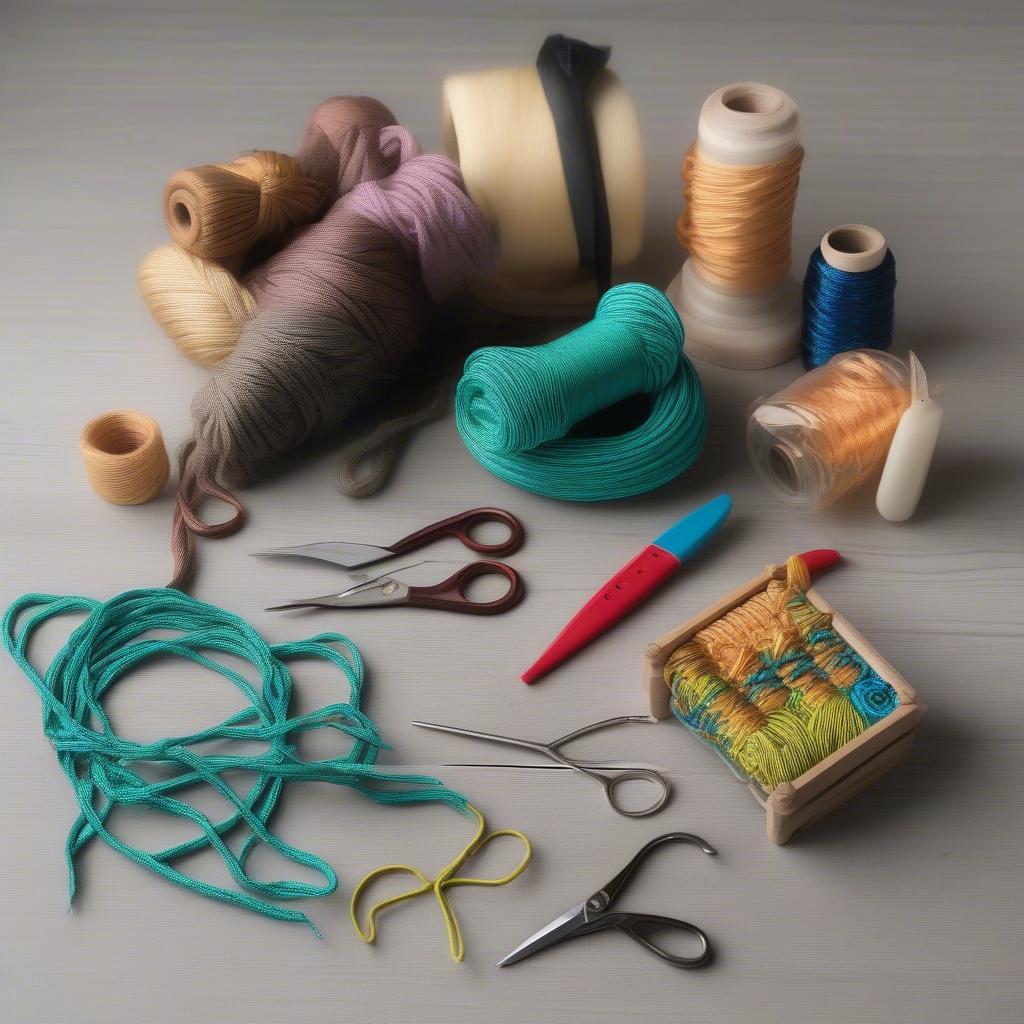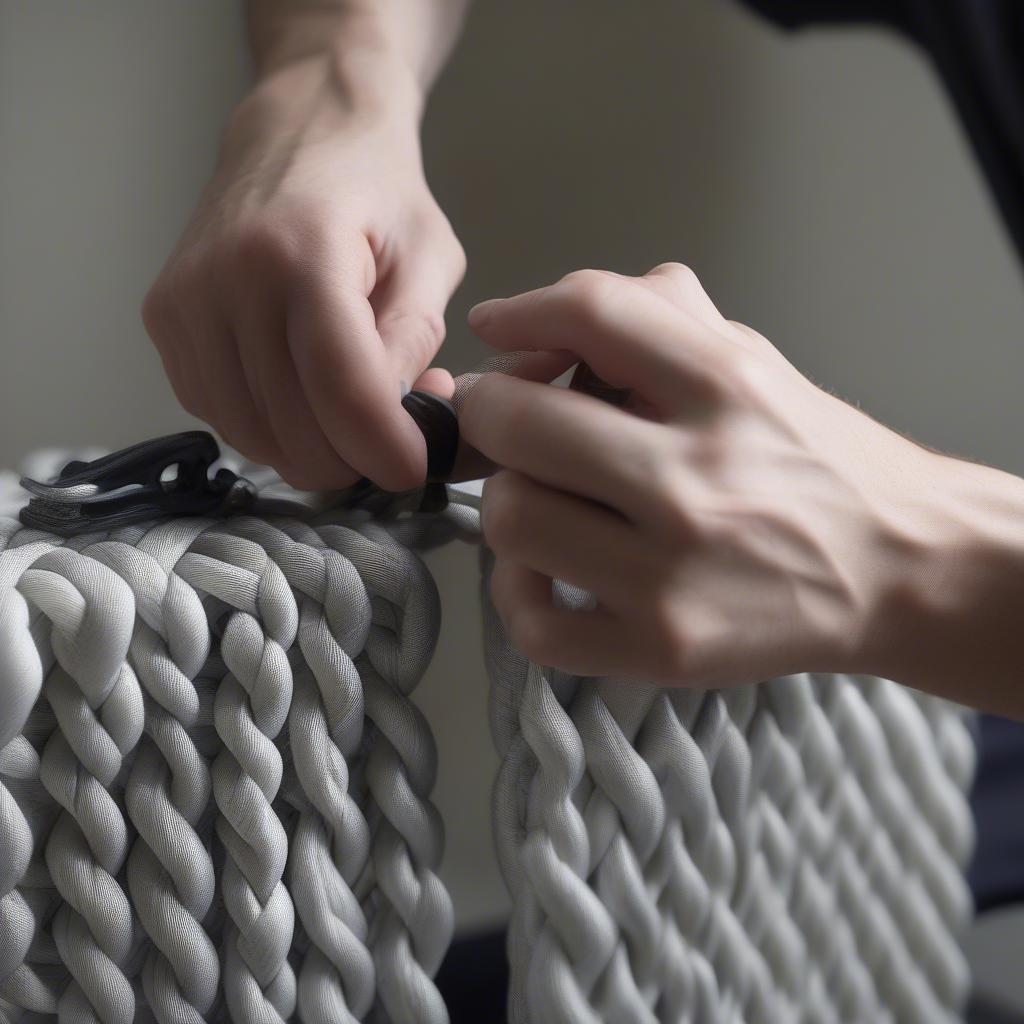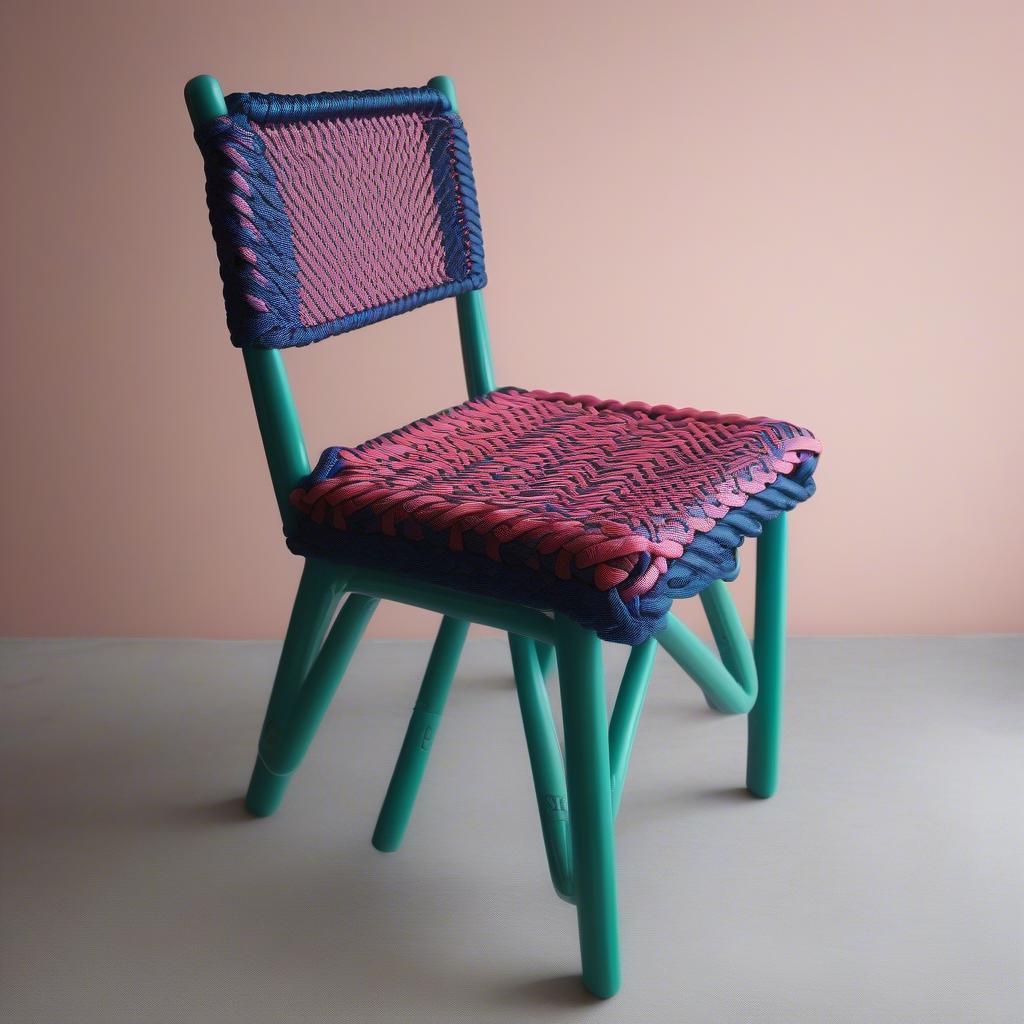Weave Chair
Crafting a Herringbone Weave Chair Seat with Paracord Rope
Creating a herringbone weave chair seat with paracord rope is a rewarding project that combines traditional craftsmanship with modern materials. This detailed guide will walk you through the process, providing tips and tricks to achieve a professional-looking and durable chair seat. Whether you’re a seasoned crafter or just beginning your journey into the world of weaving, you’ll find valuable information to help you master this unique technique.
Understanding the Herringbone Weave and Paracord
The herringbone weave, named after its resemblance to fish bones, is a classic pattern known for its strength and visual appeal. Its interlocking design creates a tight and robust surface, perfect for chair seats. Paracord, originally used for parachute suspension lines, is a strong and versatile nylon rope that’s ideal for weaving projects. Its durability, wide range of colors, and resistance to mildew and rot make it a popular choice for outdoor furniture.
Gathering Your Materials and Tools
Before you begin, assemble the following materials and tools:
- Paracord (choose a color and length appropriate for your chair frame)
- Chair frame with a solid base for weaving
- Scissors or sharp knife
- Measuring tape or ruler
- Lighter or heat shrink tubing (for sealing paracord ends)
- Optional: Weaving needle (for easier maneuvering through tight spaces)
 Essential Materials for Herringbone Paracord Chair Seat
Essential Materials for Herringbone Paracord Chair Seat
Preparing the Paracord and Chair Frame
Measure the chair frame opening to determine the required length of paracord. It’s always best to overestimate rather than underestimate. You can always trim excess paracord later. Once measured, cut the paracord to the desired length. Seal the ends of the paracord using a lighter or heat shrink tubing to prevent fraying. If the chair frame has any rough edges, sand them down to avoid damaging the paracord during weaving.
Step-by-Step Guide to Weaving the Herringbone Pattern
- Creating the Foundation: Start by creating vertical warp strands across the chair frame. Securely attach the paracord to the frame, ensuring even spacing between each strand.
- Beginning the Herringbone: Begin weaving the paracord horizontally over and under the vertical warp strands, following the herringbone pattern. Remember the over-under sequence is crucial for achieving the distinctive herringbone look.
- Maintaining Tension: As you weave, maintain consistent tension to create a tight and even surface. A loose weave will result in a less stable and less visually appealing chair seat.
- Continuing the Pattern: Continue weaving row by row, following the established herringbone pattern. Take your time and ensure each row is neatly aligned with the previous one.
 Weaving the Herringbone Pattern with Paracord on a Chair Frame
Weaving the Herringbone Pattern with Paracord on a Chair Frame
Finishing Touches and Securing the Ends
Once you’ve woven the entire chair seat, securely fasten the ends of the paracord to the frame. Trim any excess paracord and seal the ends to prevent fraying.
Tips for a Successful Herringbone Weave
- Practice the herringbone pattern on a smaller piece of cardboard before tackling the chair seat.
- Use a weaving needle to help navigate the paracord through tight spaces.
- Vary the colors of paracord to create unique and personalized designs.
“A well-executed herringbone weave not only adds comfort and style but also speaks to the enduring appeal of handcrafted furniture,” says renowned furniture designer, Amelia Blackwood. “The combination of the classic herringbone pattern with the durability of paracord creates a truly remarkable piece.”
 Finished Herringbone Weave Paracord Chair Seat
Finished Herringbone Weave Paracord Chair Seat
Conclusion
Crafting a herringbone weave chair seat with paracord rope is a fulfilling project that allows you to create a beautiful and functional piece of furniture. With patience and attention to detail, you can master this timeless weaving technique and enjoy the satisfaction of a handcrafted chair seat. Remember to choose high-quality paracord and follow the steps carefully to ensure a durable and visually appealing result. Your herringbone weave chair seat with paracord rope will not only enhance your living space but also showcase your crafting skills.
FAQ
- What type of paracord is best for chair seats?
- How much paracord do I need for a standard chair seat?
- Can I wash my paracord chair seat?
- How do I repair a broken strand in my woven chair seat?
- What other weaving patterns can I use for chair seats?
- Where can I buy paracord in different colors?
- Is it difficult to learn the herringbone weave?
For further information on crafting and DIY projects, please explore our other articles on basket weaving, wicker furniture, and rattan crafts.
Need help? Contact our 24/7 customer support at Hotline: +84 388 951 999, or visit our offices at Hanoi, Vietnam or Tech Avenue, Suite 12, San Francisco, CA 94105, USA.
